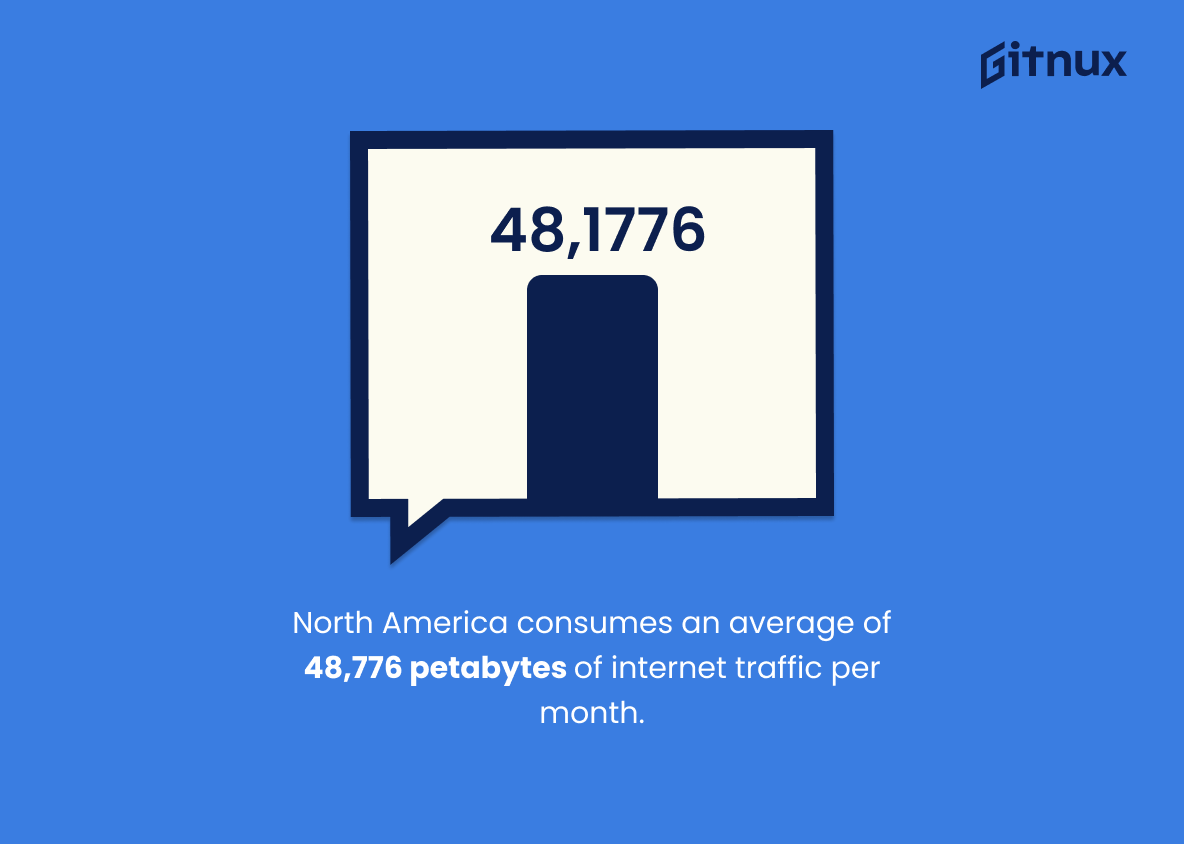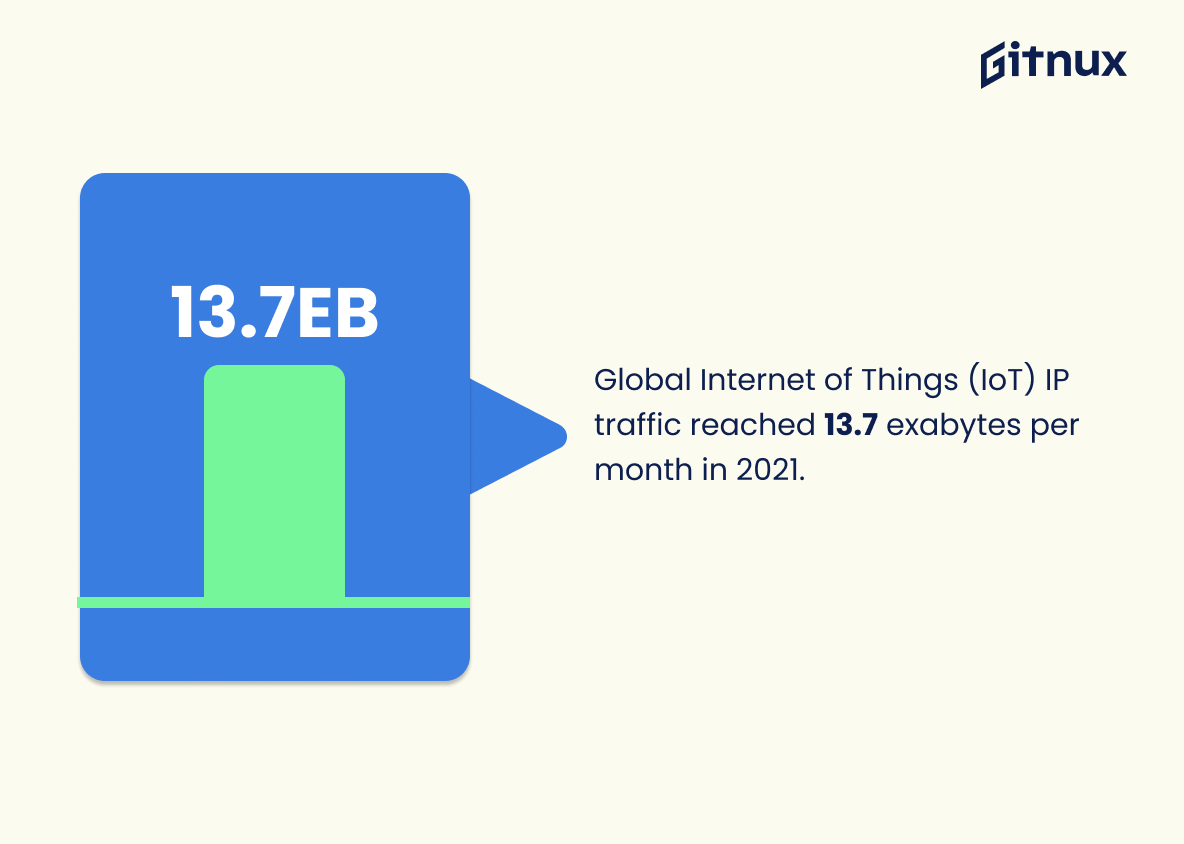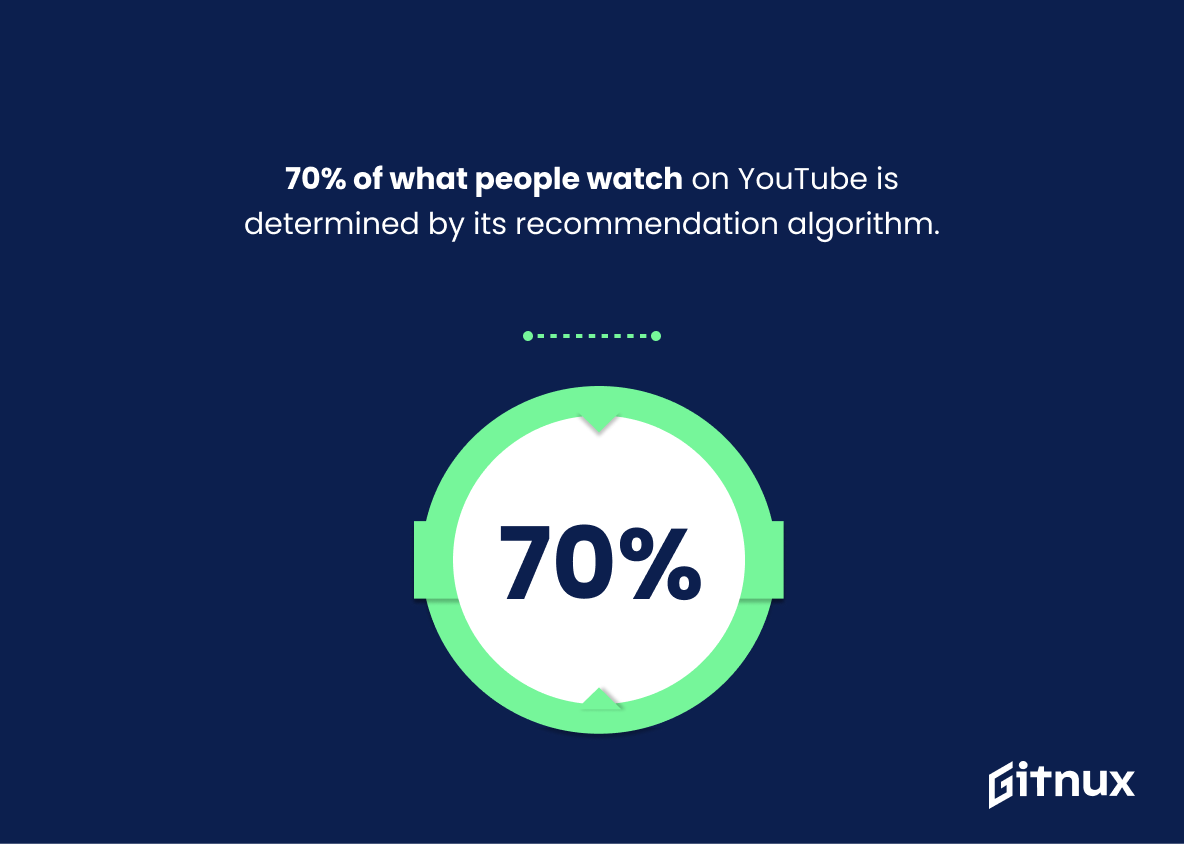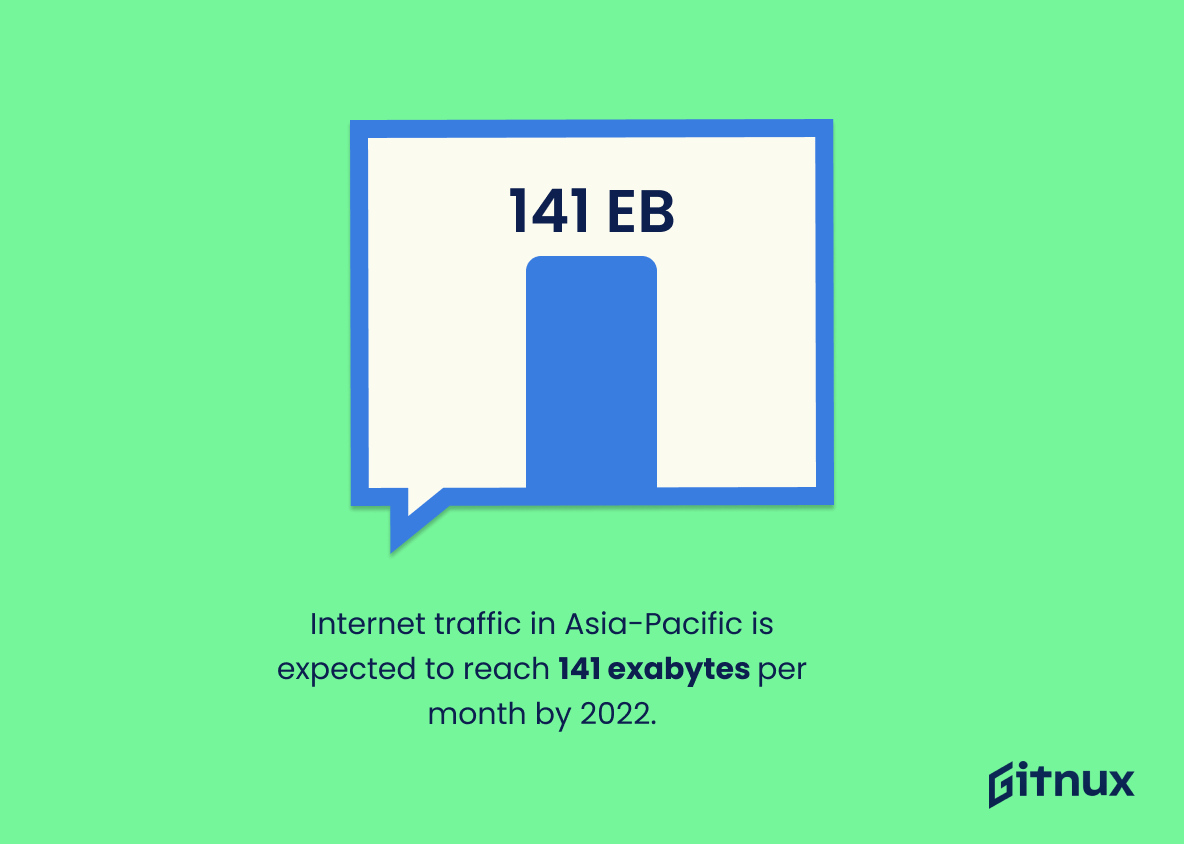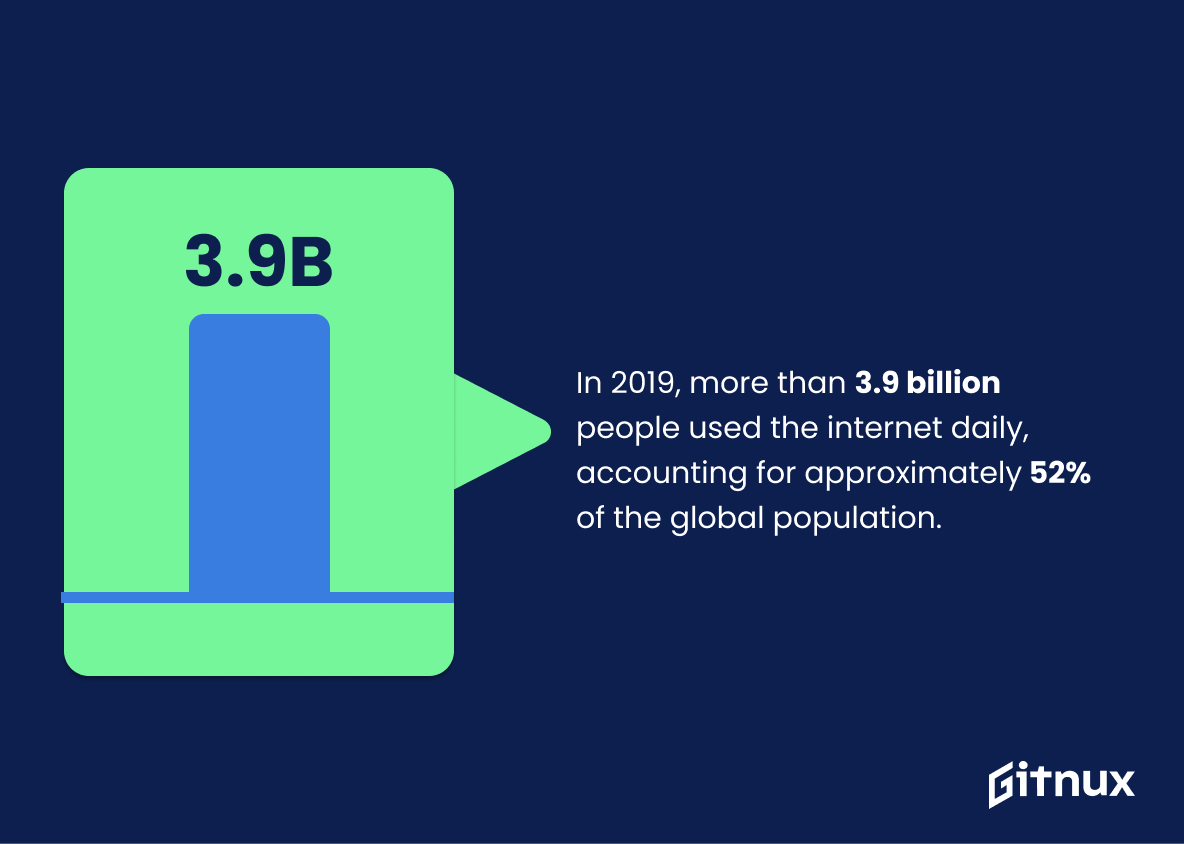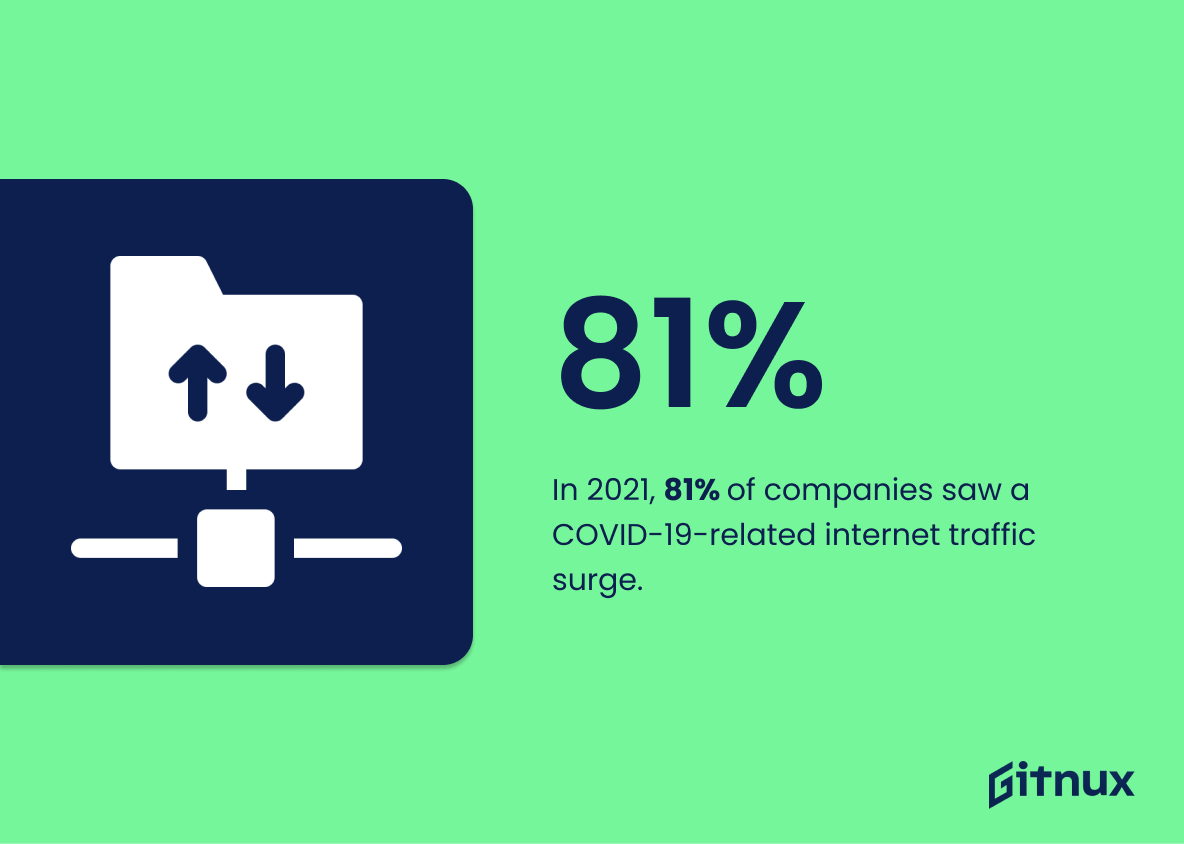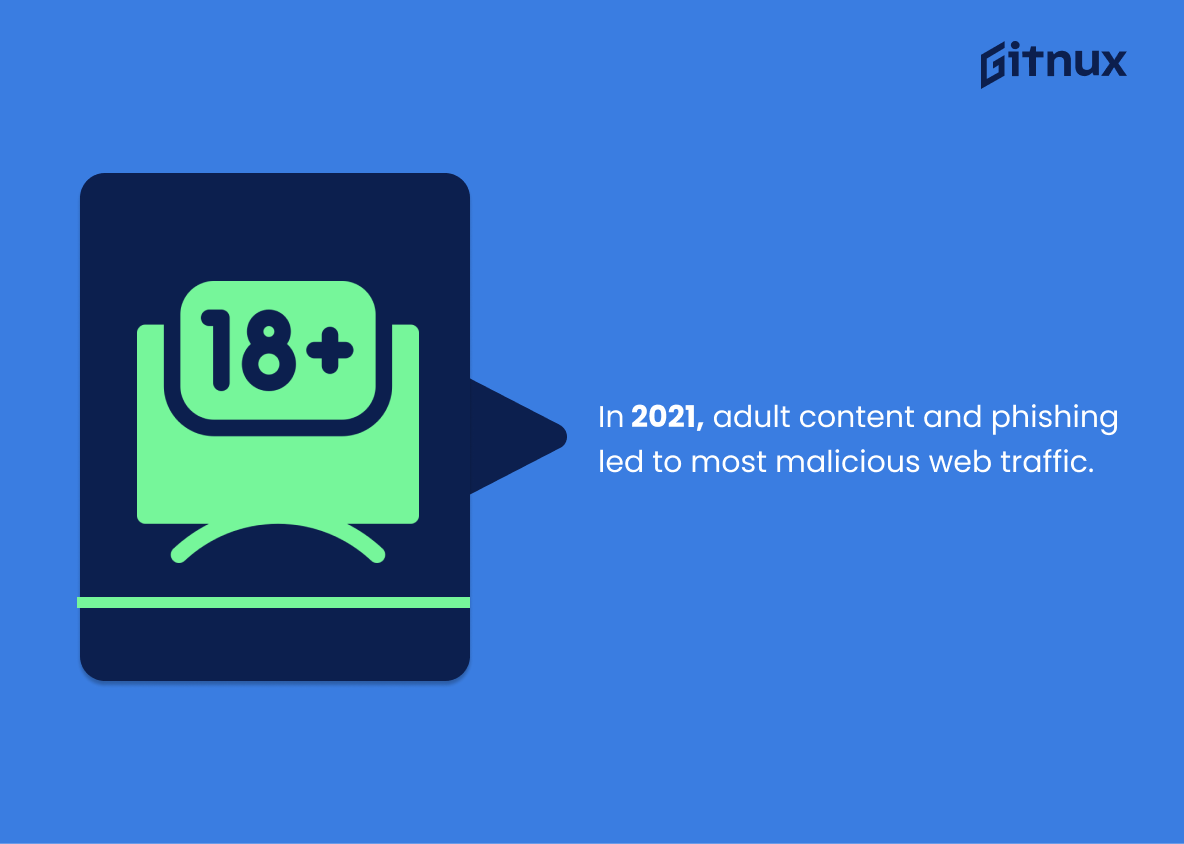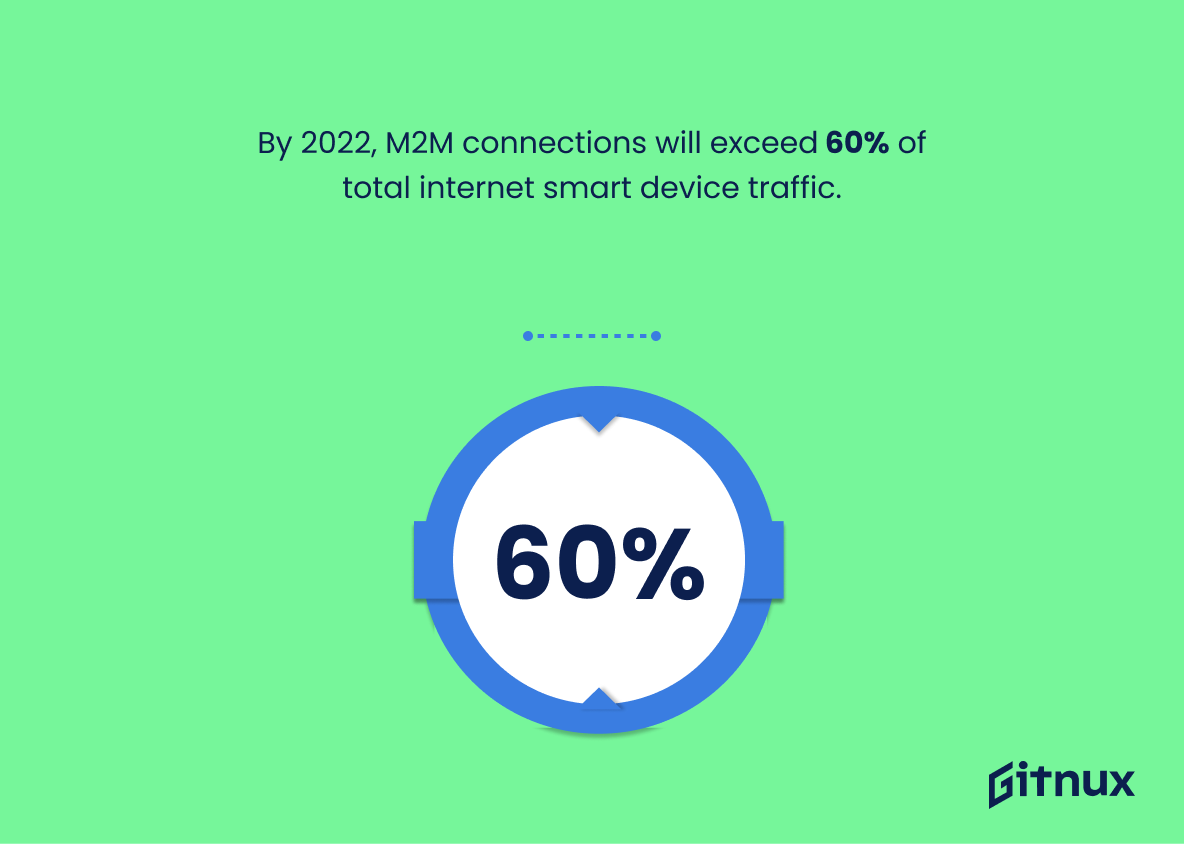The internet has become an integral part of our lives, and its usage continues to grow exponentially. As the world becomes increasingly connected, it is important to understand how this affects global internet traffic. This blog post will explore some key statistics about worldwide internet traffic in 2021 and beyond. We’ll look at data from reliable sources such as Statista, Cisco Systems, Business of Apps, Ericsson Mobility Report and more to gain insight into current trends in web traffic across different regions around the globe. From video content dominating 82% of all Internet Traffic in 2021 to North America consuming 48776 petabytes per month – we’ll cover a wide range of topics related to global Internet Traffic Statistics that are sure to be informative for readers.
This statistic is a milestone in the history of the internet, demonstrating the incredible growth of online activity over the past few years. It is a testament to the power of the internet and its ability to connect people from all over the world. This statistic is especially relevant to a blog post about Internet Traffic Statistics, as it provides a benchmark for the current state of the internet and can be used to compare future trends.
By 2023, internet traffic is predicted to reach 150.7 exabytes per month.
This statistic is a telling indication of the ever-increasing demand for internet access and the need for reliable infrastructure to support it. With the projected growth in internet traffic, it is essential to understand the current trends and the potential implications for the future. This blog post about Internet Traffic Statistics provides an invaluable resource for those looking to stay informed and prepared for the changes to come.
Internet Traffic Statistics Overview
Global internet traffic is expected to grow at a Compound Annual Growth Rate (CAGR) of 24% between 2021 and 2026.
This statistic is a crucial indicator of the future of the internet, as it demonstrates the rapid growth of internet traffic over the next five years. It is a key factor to consider when discussing the current and future state of the internet, and is especially pertinent to a blog post about internet traffic statistics.
North America consumes an average of 48,776 petabytes of internet traffic per month.
This statistic is a testament to the sheer amount of data being consumed in North America each month. It highlights the importance of understanding internet traffic statistics in order to ensure that networks are able to handle the demand and that users are able to access the content they need. It also serves as a reminder of the need for efficient and reliable internet infrastructure in order to keep up with the ever-increasing demand.
In 2022, 92.6% of web traffic in the United States was generated through mobile devices.
This statistic is a telling indication of the growing importance of mobile devices in the US when it comes to web traffic. It highlights the need for businesses to ensure their websites are optimized for mobile devices, as the majority of web traffic is now coming from them. This is especially pertinent for blog posts about Internet Traffic Statistics, as it provides a clear snapshot of the current state of web traffic in the US.
Global Internet of Things (IoT) IP traffic reached 13.7 exabytes per month in 2021.
This statistic is a testament to the ever-growing importance of the Internet of Things (IoT) in our lives. It shows that the amount of data being transmitted over the internet is increasing at an exponential rate, and that the IoT is playing a major role in this growth. This is an important indicator of the increasing reliance on the internet for everyday activities, and it is essential to understand the implications of this trend in order to ensure that the internet remains a safe and secure platform for all users.
Internet video streaming and downloads accounted for the highest share of global monthly IP traffic in 2019, equaling over 60%.
This statistic is a testament to the immense popularity of internet video streaming and downloads, highlighting the fact that it is the most dominant form of global monthly IP traffic. It is a clear indication that the demand for video streaming and downloads is growing exponentially, and that it is becoming increasingly important for businesses to understand the trends and patterns of internet traffic in order to stay competitive. This statistic is essential for anyone looking to gain insight into the current state of internet traffic and its implications for the future.
Internet traffic in Asia-Pacific is expected to reach 141 exabytes per month by 2022.
This statistic is a powerful indicator of the immense growth of Internet usage in the Asia-Pacific region. It speaks to the increasing demand for digital services and the potential for businesses to capitalize on this trend. With the region’s population expected to reach 4.5 billion by 2022, this statistic is a clear sign of the immense opportunities that lie ahead for those looking to capitalize on the digital revolution.
The average global consumer is projected to generate 60.5 GB of internet traffic per month by 2022.
This statistic is a telling indication of the ever-increasing demand for internet services. As the average global consumer is projected to generate more internet traffic per month, it is clear that the need for reliable and efficient internet services is growing. This statistic is a valuable insight for anyone interested in understanding the current and future trends of internet traffic, and is an important factor to consider when discussing internet traffic statistics.
In 2019, more than 3.9 billion people used the internet daily, accounting for approximately 52% of the global population.
This statistic is a powerful indicator of the immense impact the internet has had on our lives. It demonstrates the sheer number of people who rely on the internet for communication, entertainment, and work, and how it has become an integral part of our daily lives. This statistic is essential to understanding the current state of internet traffic and how it is likely to evolve in the future.
In 2021, the average global internet user spent 6 hours and 55 minutes on the internet daily.
This statistic is a telling indication of the sheer amount of time people are spending online. It speaks to the power of the internet and its ability to captivate and engage users. It also serves as a reminder of the importance of understanding internet traffic statistics in order to better understand how people are using the internet and how to best optimize it for their needs.
In 2021, 81% of companies experienced an increase in internet traffic as a result of the COVID-19 pandemic.
This statistic is a testament to the power of the COVID-19 pandemic in driving internet traffic. It shows that the pandemic has had a significant impact on the way people use the internet, with a large majority of companies experiencing an increase in traffic. This is an important statistic to consider when discussing internet traffic statistics, as it provides insight into the current state of the internet and how it has been affected by the pandemic.
Social media platforms accounted for 33.1% of the downstream internet traffic in North America in 2020.
This statistic is a telling indication of the immense impact that social media has had on the internet traffic in North America in 2020. It is a clear demonstration of the power of social media to drive engagement and usage of the internet, and its importance in the digital landscape. This statistic is an important piece of information for anyone looking to understand the current state of internet traffic in North America, and its implications for businesses and individuals alike.
In 2020, Netflix accounted for 11% of the total downstream volume of internet traffic worldwide.
This statistic is a testament to the power of Netflix in the world of internet traffic. It shows that Netflix is a major player in the global internet traffic landscape, accounting for a significant portion of the total downstream volume. This statistic is important to consider when discussing internet traffic statistics, as it provides insight into the current state of the industry and the impact of streaming services on the overall internet traffic.
In 2021, adult content and phishing were the two most common content categories responsible for driving web traffic to malicious sites.
This statistic is a stark reminder of the dangers lurking on the web. It highlights the fact that adult content and phishing are two of the most common ways malicious actors are using to drive unsuspecting users to malicious sites. It serves as a warning to all web users to be vigilant and take extra precautions when browsing the web.
By 2022, Machine-to-Machine (M2M) connections will account for more than 60% of the total internet smart devices traffic.
This statistic is a crucial indicator of the direction in which internet traffic is heading. It highlights the increasing prevalence of Machine-to-Machine (M2M) connections, which are expected to account for the majority of internet smart device traffic by 2022. This is a significant shift in the way that people interact with the internet, and it is important to understand the implications of this trend in order to make informed decisions about the future of internet traffic.
Gaming accounted for 8% of global downstream internet traffic in 2020, up from 2.3% in 2015.
This statistic is a testament to the growing influence of gaming on the internet. It shows that gaming has become an increasingly important part of the global internet landscape, with its share of downstream traffic more than tripling in the past five years. This is a trend that is likely to continue, as more people turn to gaming for entertainment and socialization. As such, this statistic is an important indicator of the changing dynamics of the internet and its users.
Conclusion
The statistics presented in this blog post demonstrate the rapid growth of internet traffic over the past few years. Global internet traffic surpassed 100 billion GB in 2022, and is predicted to reach 150.7 exabytes per month by 2023. Video content accounted for 82% of all internet traffic in 2021, while global Internet of Things (IoT) IP traffic reached 13.7 exabytes per month that same year. North America consumes an average of 48,776 petabytes of internet traffic each month, with 92.6% generated through mobile devices in 2022 alone; meanwhile Asia-Pacific is expected to reach 141 exabytes per month by 2022 as well. Google was found to be the most popular website globally at 14%, followed closely behind by streaming services such as Netflix which account for 11%. Social media platforms also made up a significant portion – 33% -of downstream webtraffic within North America last year; however adult content and phishing were responsible for driving more malicious site visits than any other category combined worldwide during 2021 so far.. It’s clear from these figures that not only has there been a dramatic increase in overall usage but also how we use it: video streaming now accounts for 75% percent on mobile devices compared to 60 % just two years ago whilst gaming has seen its share double since 2015 reaching 8%. With Machine-to-Machine connections set to make up more than half total smart device’s data transfer soon too – it looks like our reliance on digital technology will continue growing exponentially into the future.
References
0. – https://www.digitalinformationworld.com
1. – https://www.cisco.com
2. – https://www.iot-now.com
3. – https://www.kentik.com
4. – https://www.sandvine.com
5. – https://www.sophos.com
6. – https://www.statista.com
ZipDo, cited June 2023: Internet Traffic Statistics

